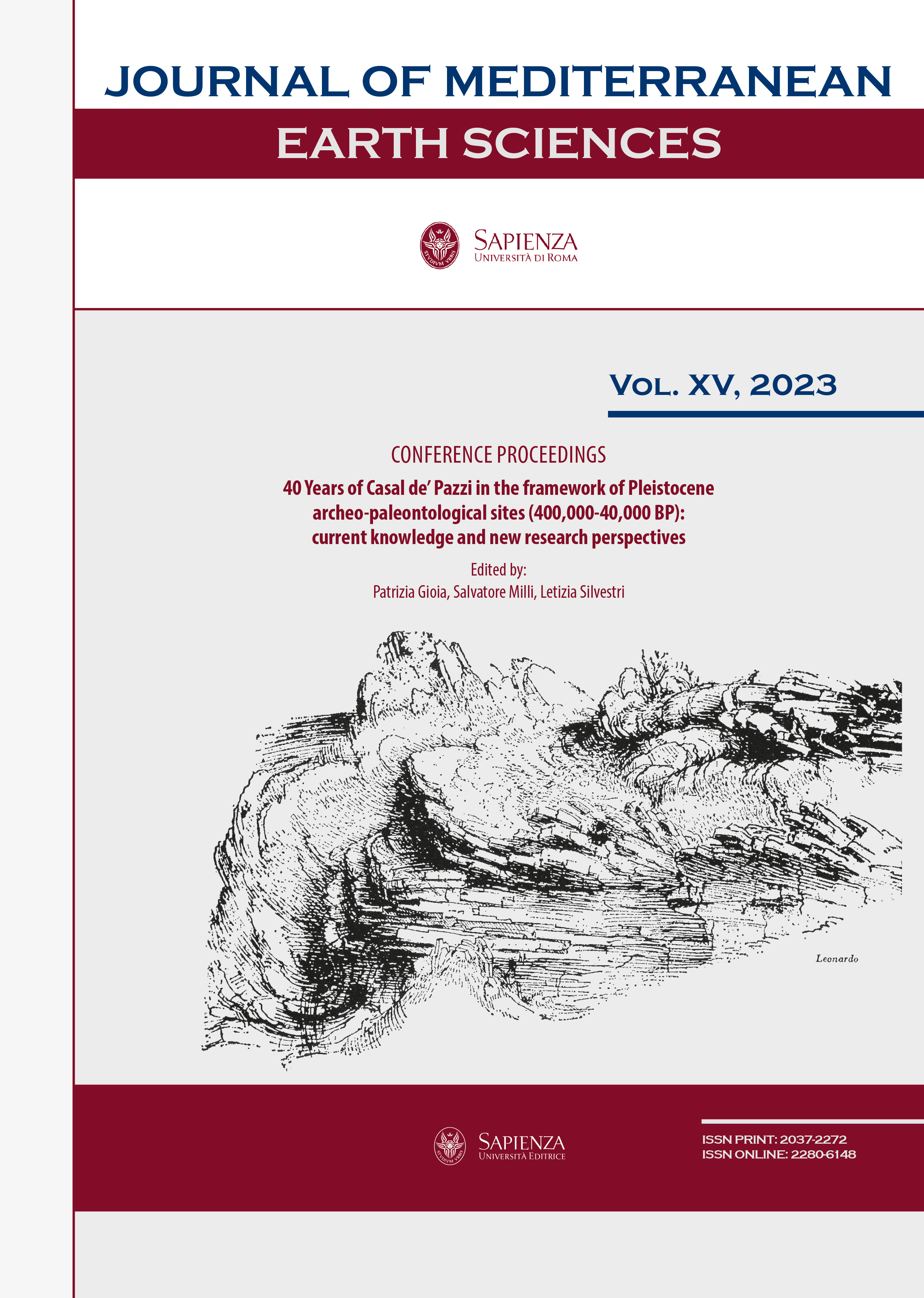New data related to the MIS 3 deposit of the Cava I.E.C.M.E. (Bologna, Italy)
DOI:
https://doi.org/10.13133/2280-6148/18162Abstract
A major project was launched in 2018 to enhance the sites of geo-paleontological interest in the karst area of the “Gessi Bolognesi” (Messinian Bolognese gypsum outcrops), within the framework of the “Gessi Bolognesi” regional park. New chronological and paleo-environmental sequences dating back to a more recent phase of the Late Pleistocene could thus be acquired. Findings come from several relict paleokarst caves of various extension and erosional genesis - corresponding to MIS 3-2 - emerging at a short distance from each other along the north to SE ridge between the Savena and Zena streams. The study focuses on the Cava I.E.C.M.E. deposit (Monte Croara - 283 m a.s.l.), which was already investigated in 1972-73 by the Institute of Geology of the University of Ferrara and preliminarily ascribed to an intermediate phase of the Last Glacial Period. The review of the context, supplemented by additional unpublished findings, has led to a rather detailed reconstruction of the paleoecology of the first Apennine margin in the phases preceding the Last Glacial Maximum (LGM). Materials come from the Lower Unit sediments of three different relict caves having a sub-vertical orientation, linked to a single formation episode, which occurred rapidly and massively, where it was possible to collect samples for pollen, fauna and lithic industry dating from the Middle Paleolithic. A bone-derived radiometric date attributes the formation of these sediments to a central stage of MIS 3, around 44,000-43,000 cal BPY. Cold taxa forests (Pinus sylvestris and Pinus mugo) prevailed, interspersed with grasslands populated by large herbivores: Bison priscus, Bos primigenius, Megaloceros giganteus, Equus sp. The faunal list also includes Alectoris graeca, further evidence of rocky outcrops on the border between coniferous forests and grass clearings covered with low shrubs and herbaceous plants. The last groups of Middle Paleolithic hunters-gatherers used to occupy the gypsum outcrops, in a phase of full karst evolution, being still covered, at least partially, by Middle-Lower Pleistocene formations rich in small pebbles, which were used to manufacture artifacts. The adoption of specific knapping techniques, as well as the Levallois débitage method, enabled them to fully exploit this lithological resource potential, to obtain cutting products/by-products (splinters-scrapers). The re-examination of the deposit proved to be essential for a better understanding of some techno-typological aspects of the lithic context, thanks to the relationship between the absolute chronology and paleoecological data. It also allowed for the first time to document the presence of human populations in the late Middle Paleolithic, in the Emilia-Romagna territory. This study also provides evidence of their close connection with some specific ecosystems of the Apennine margin, characterized by a faunal association with large herbivores which occupied the belt facing the opposite vast Adriatic plain and its macrosystems.
Downloads
Published
How to Cite
License
The submission has not been previously published, nor is it before another journal for consideration (or an explanation has been provided in Comments to the Editor).


